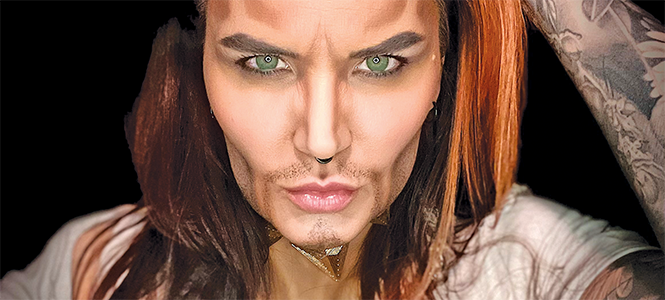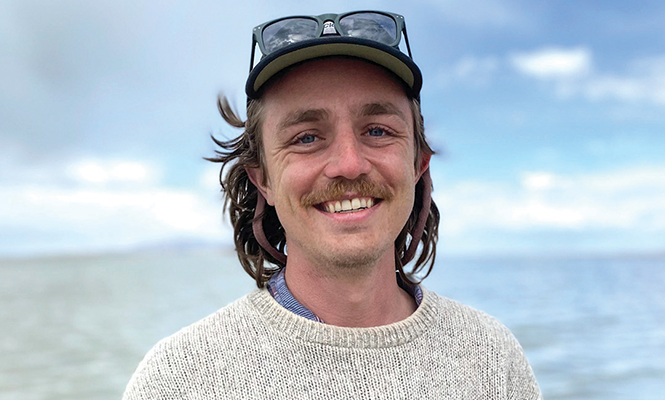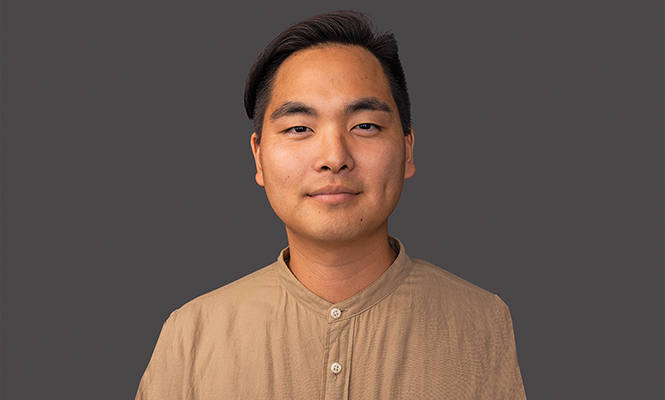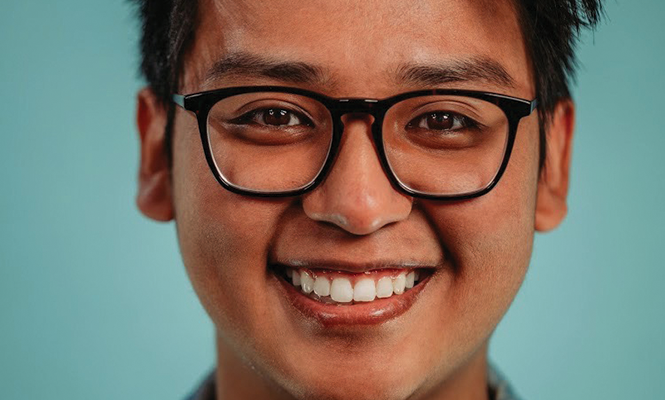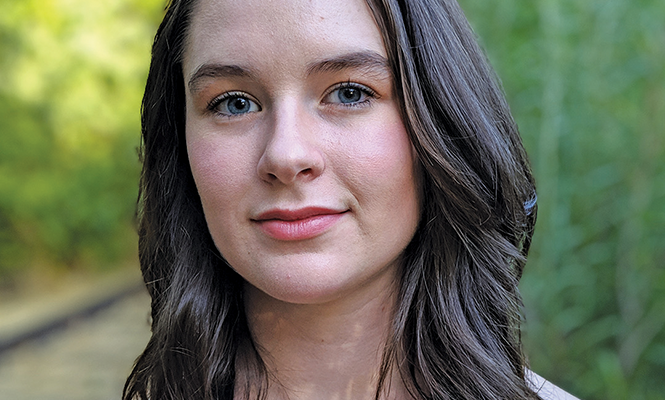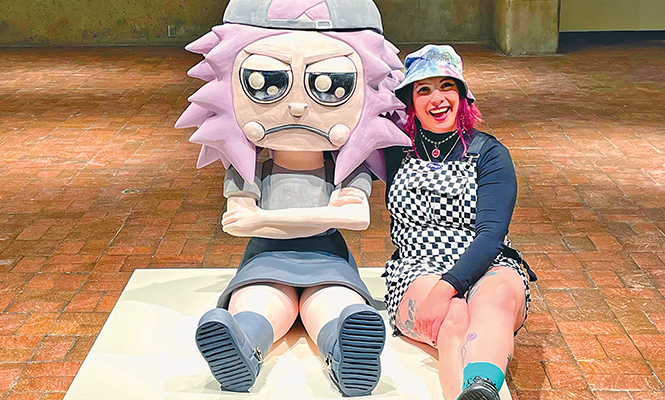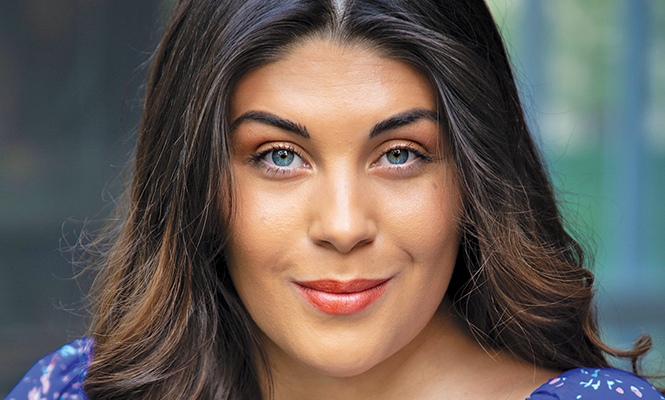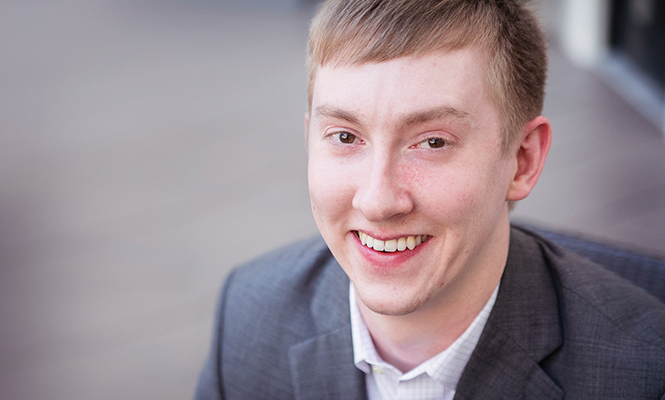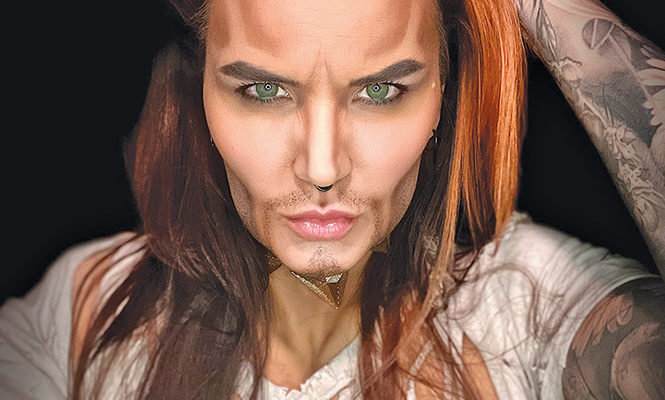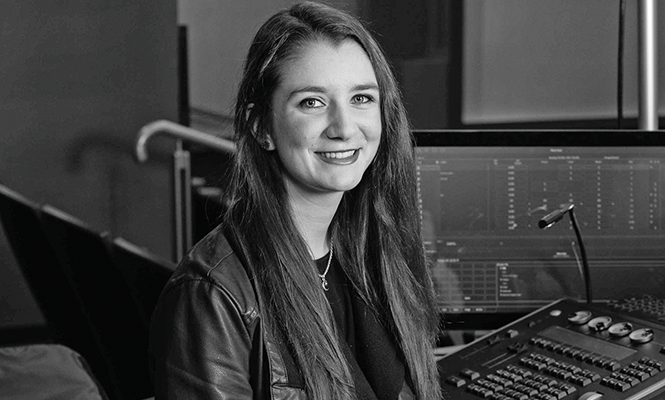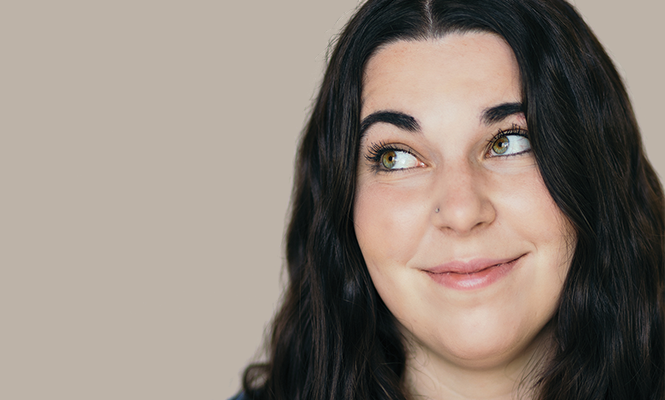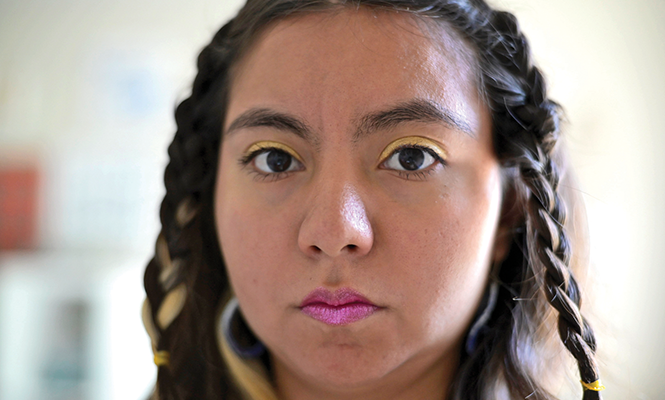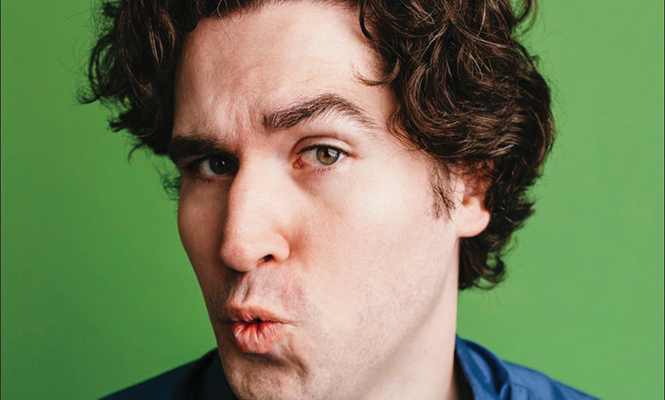A Salute to LOCAL ArtISTS
20(ish) Under 30(ish): An introduction to Utah's young, on-the-rise artistic talent
By Scott Renshaw @scottrenshawIn sports, the difference between a successful run of a few years and a truly dominating franchise is that the departure of a few great players can change everything, if there's no new talent coming up all the time. It's similar in the arts. For a community to create a truly vital local arts scene, it needs to be a place where not just established creators can keep finding audiences, but where emerging artists are nurtured and showcased as well.
This year, City Weekly's annual Arts Issue would like to introduce you to some great talent to watch for in our "20(-ish) Under 30(-ish)" profiles. We chose that designation because we had no interest in checking IDs; being a younger, on-the-rise creator was enough to warrant inclusion. And when you cast a wide net—asking leaders of the local arts community in a wide range of creative disciplines for their nominations—you're never sure how many candidates will emerge, so we didn't want to artificially limit the number.
This list is by no means comprehensive—it wouldn't be possible to include every worthy candidate. Those featured in these pages have provided details about their artistic origins, their goals and being an artist in Utah. We hope by getting to know them, you'll discover more about the many talented creators in our backyard—and how bright Utah's artistic future remains.
Erin David—Utah Symphony violinist
What's your artistic origin story? I started playing violin with my big sister whenshe was 7 andI was 5.Mymomhadread a book about how all children can and should learn the violinand a foreign language(ours was German)following an aural, "mother tongue" approach. ...
It wasn't until high school that I fell in love with orchestral music and performance. I loved being on stage with my friends, unitedinthe common goal of making music, telling a story.Wecould compete backstage,trying to one-up each other's Paganini,but as soon as we were sitting together, it was all about synthesisand connection.
What's unique about your field in Utah? The classical music world isrelativelysmall andfragmented, anditsmusicians far-flung. ...
Because Utah is fairly remote,it can feel lonely sometimes. Therearealsofew rungs of the proverbial ladder to climb here in Utah,meaning if I ever did wantto audition for a principal position—for instance—I would most likely have to relocate to another state or even country. So it's a bit scary to put down roots, thoughat presentI amveryhappy with my job. One of the advantages of Utah's size andmybeing one of the fairly few professional violinists in the stateisthat I get first dibs on a lot of projects. Not only do I get to play with the Utah Symphony and Utah Opera, but since I've moved here, I've gotten to play on albums and film scores that have been recorded locally.
What's next in your creative pipeline? I recently bought a guitar and have been trying my hand at writing songs,so maybe the next projectwill be torecordsome of them. Aside from that, all of my upcoming performances aresymphony-related. I am especially excited this season to play Mahler's Third Symphony with membersof the world-famous Tabernacle Choir, and Bruch's Scottish Fantasy with Utah Symphony's concertmaster, Madeline Adkins.
Do you have a big goal as a creator? I used to listen to recordings of myself playing and think, "If I'm ever happy with how I sound, then I can die peacefully." It sounds a bit dramatic, but it's how I avoided external goals over which I had little control. As King Bumi says inAvatar: The Last Airbender, "I knew I'd know it when I knew it!" Now, I have a fewmore specificgoals—playing violin on an album with my favorite band,The Shins, andperforming chamber music with some of my most influential teachers.
But I still hold onto that goal of making myself proud with every performance I give, striving to improve every day, and never losingmy love of music.
Douglas Tolman—visual artist
What's your origin story? I grew up close to the land and have always appreciated it deeply in some capacity. As I took interest in photography, my connection to the place I call home became a central theme. Eventually, my practice morphed into making sculptures to be photographed in the sites they take influence from, a conversation between object and place.
More recently, my practice has become deeply informed by place-based youth education, ecological science and land-use research.
What are some unique challenges or advantages of being an artist in your field in Utah? I am a white male, descended from the pioneers who colonized this land. I find a sincere challenge in trying to reckon with the violent past I benefit from without alienating my family or my cultural heritage, and without perpetuating that colonial legacy through my practice.
Place-based youth education has become an avenue to promote a reciprocal relationship with the land, one that provides an important parallel to my art practice.
What's next in your creative pipeline? I am formulating a new body of work around the relationships between flood and fire as they relate to land management and climate change. This will take form in a series of sculptures and a video installation in mid-2023.
Additionally, I'll continue to facilitate a community countermapping project called, "Where Are You"—a nomadic trailhead kiosk that visits sites of socio-ecological significance prompting participants to draw their own maps of the places it visits.
Do you have a big goal as a creator? I hope that my practice can move my community toward a more reciprocal relationship with the land we live on. To do this, I try to center my practice around questions, rather than answers, that prompt viewers and participants to evaluate their relationships with land, climate and community.
Kelyn Ikegami—filmmaker, The Plains
What's your origin story? Mr. Madis' 10th grade world history class—he screened Ingmar Bergman's The Seventh Seal to cover the bubonic plague. I don't know how many people were paying attention, but I was captivated. For the first time, I understood cinema can be an art form concerned with the complex and contradictory nature of the human experience. ...
It validated my emotions and experiences through its imagery. It was a way for me to experience what I otherwise would never experience. And if film could offer that, I wanted to try and make it.
What's unique about your field in Utah? From my experience, the challenge is that it's still not quite on par with some other places around the country in terms of resources [for filmmakers]. That being said, I think that has made the community even hungrier to produce great work, and we're seeing that in the types of productions that are coming to Utah. We're not there yet, but we're up-and-coming—and that's an exciting place to be.
What's next in your creative pipeline? A documentary about the 1987 Salt Lake Trappers, who hold the longest winning streak in professional baseball. [It] follows the history-making players and where their lives have taken them since that fateful season. It's a homegrown story but also spans across the country and even the world.
Do you have a big goal as a creator? Every creator out there knows that you can't create something without inspiration. And because inspiration is, by its very nature, borrowed, there is a part of you as a creator that wants to give back—to create something that allows someone else to have the same transformative experience you did when you were inspired by art for the first time.
Kaela Rivera—writer, Cece Rios and the Desert of Souls
What's your origin story? I wasn't actually very good at writingorreading as a kid. I didn't like to sit still or finish things, so the quiet, contemplative action of writing was incredibly frustrating. But my mom taught me that words could capture my big thoughts and feelings, that I had things worth saying and that they could empower me if I learned to use them. She taught me to finish things, not to underestimate myself and that it's OK to struggle with something before you get better at it. ...
Once I grew in the skill, it became my dream to share with others what I finished, what I learned—and take them on some exciting, wild adventures with me.
What's unique about your field in Utah? Utah as a whole has such a respect for cultural activities ... and that creates a vibrant backdrop as an author. Where I grew up, you couldn't find a bookstore without driving about an hour in any direction. Here, I can drive an hour and pass powerful indie bookstores and numerous chain stores all stuffed to the brim with exciting events and beautiful and diverse books, to say nothing of the wonderful writing conferences, dedicated librarians and other authors filling the state.
Living in Utah has empowered my author journey, and I'm so grateful for the supportive book community I've met by being here.
What's next in your creative pipeline? I've been buried inCece Rios and the Desert of Soulsand its sequel,Cece Rios and the King of Fears, for the last while. But now, I'm working on revisions for the last book of the trilogy, coming out in fall 2023. After that, I've got a spooky middle grade book duology planned, and I'm excited for where it could go.
Do you have a big goal as a creator? I have many goals ... but the big one [is] to take people on adventures that help heal the wounds in their hearts, and bring hope to difficulties they endure.
I want to encourage and to empower, and I want to show that by exploring our differences and difficulties—everything from cultural differences to mental health issues—we can come closer and become a more united, understanding and loving people.
Jordan Reynosa—dancer/theater artist/artistic director, Beyond the Line Theatre Co.
What's your origin story? I was extremely lucky to have gone to a performing arts high school with incredibly wise/knowledgeable, loving, creative and artistic teachers....
My experience in high school gave me purpose; I developed a strong love for all art forms and wanted to participate in all of them. It changed who I was and was going to be.
What's unique about your field in Utah? Between my interests for dance and theater (and all other art forms),Utah has everything I feel like I need for the kind of work I want to do. It's a mecca for modern dance, has a large quantity of strong, local, independent theater companies and has a large community of people who support both mediums as artists and audiences. ...
The biggest disadvantage ... would be the amount of people I reach, and building a foundation of interest for the work I do. Devised theater is not often done around Utah, and when it is, it's usually a single project here and there. I feel like it's taking a long time for audiences to understand what devised theater (and the specific kind of theater I create) is/can be.
What's next in your creative pipeline? As an artist who creates works over a long period of time, it's hard for me to sayexactlywhat I'm doing next. I'd like to continue devising theater and create another dance production within the next year, to keep my momentum. ...
As a performer, I'll be dancing with Lyrical Opera Theater of Utah inTosca, but I'll take whatever comes my way!
Do you have a big goal as a creator? I think my big goals are in my company and the work that I want to do during its lifetime ... to leave a lasting impact artistically on the surrounding community and culture, as well the culture and history of society at large. My dream is one day the company I created will be thought of as a machine and epicenter for unique and artistic new works that inspire generations of artists.
Kara Komarnitsky—dancer/ choreographer
What's your origin story? There's no one moment in my life that started me down the creative path, but from a young age, I became concerned about the environment and climate change.
I felt that creative endeavors like dance can start new conversations and motivate people to consider new perspectives on this important issue in a more tangible way than traditional methods of advocacy.
What's unique about your field in Utah? One challenge is reaching audiences not normally interested in dance. I keep this in mind when creating work and try to design ways of making the show more understandable and accessible to those who may be new to the experience.
What's next in your creative pipeline? I'm currently working on a project for the Great Salt Lake Fringe Festival in 2023 that will likely focus on Salt Lake City's relationship to water. In the meantime, I'm helping with community outreach at Repertory Dance Theatre and performing in work directed by Myriad Dance Co. and the Interdisciplinary Arts Collective.
I'm also teaching at South Valley Creative Dance and Simple Yoga Fitness.
Do you have a big goal as a creator? I would love to build a dance company that focuses on our relationship to the environment and connects science, advocacy, ethics and movement. I think science and dance can support each other to provide transformative experiences for our relationship to the environment.
Lewis Figun Westbrook—writer/graphic designer
What's your origin story? I was very much the kid with their head in the clouds, whose favorite game was make-believe. It was always the thing I first went to when bored or upset, because it was accessible to me, unlike so many other things. ...
I learned how to communicate and be a friend through media, I learned what queerness was through YouTube, and I even recently realized I was neurodivergent because of watching shows with autistic characters. I create because art taught me how to be me, and I want to return the favor to any young people out there who need some inspiration.
What's unique about your field in Utah? We are so lucky to have some really cool organizations here. The League of Utah Writers ... has helped me so much in my journey to publishing. ... Then there's Under the Umbrella, which provides so many opportunities for the community and local artists. Utah is, sadly, not one of the most queer-friendly states, so it's a bummer when I have to work with people who don't know much about it. But I do think that's a challenge in many places.
What's next in your creative pipeline? Currently, I'm working on three different manuscripts—which I hope to start querying next year—and starting the process of shooting one of my short film scripts, submitting a million different short stories (the actual goal is 80 in 2022), [working on] a series of self-portraits exploring transitioning called "Growth," being a multimedia intern for DIVA [a local nonprofit], and writing more short stories.
I'm also always taking on new freelance projects for my graphic design work and falling in love with new forms of art.
Do you have a big goal as a creator? Honestly, just to create and discuss art with other people. Art has meant so much to me, and there's nothing like hearing about another person's experience and opinions. I'm also very lucky in the fact that I have a lot of different forms of privilege, and I'm really excited for the day where I take a step back and am instead supporting other artists, especially marginalized artists.
Art created by queer people for queer people changed my life, and I hope to make sure other communities have that opportunity.
Christina Riccio—visual artist/ceramicist
What's your origin story? As a kid I was always messing around with art supplies, and as an undergraduate, I was really interested in art but never had any formal training or even thought that being an artist was a possibility for me. I took a drawing class in my sophomore year and wasnotvery good but loved it so much that I continued to pursue art into my next semester.
During that final semester of my sophomore year, my professor asked me if I "needed any of my work for a portfolio to apply for the art program," and that just blew my mind. I went for it, got in and found my way to ceramics by the end of the program. I continued pursuing ceramics ... and found that it gave me the self-expression and the outlet I needed to manage living with severe generalized anxiety disorder and depression. I still use my art that way.
What's unique about your field in Utah? I have discovered some great opportunities in terms of other local artists reaching out to me to be part of different artist markets around Salt Lake City.
I really love connecting with other artists in that way. It's great to not only see what kind of work other local artists are making, but to also receive such amazing support from the artistic community.
One challenge for me personally is that I am still figuring out the best way to ship my pieces. I am originally from Buffalo, New York, so if anyone from home wants to order a piece from me, it is always a challenge to figure out how to get it to them safely from 2,000 miles away.
What's next in your creative pipeline? I am currently working on ceramic projects both functionally and sculpturally. With functional work, I like to keep it on the fun side, so I am in the process of creating a spooky fall collection that will include coffin and pumpkin-shaped mugs and bowls with bats, ghosts and spiderwebs on them!
In terms of my sculptural work, I am working towards expanding my most recent body of work that discusses my experiences with mental illness through the subversion of kitsch imagery. I am looking to take the character I created, "Little Miss Moody," and bring her into three-dimensional comic-book panels (think diorama-style) that portray the realities of inner vs. outer experiences of living with mental illness.
Do you have a big goal as a creator? Because my experiences as a human and as an artist are so entrenched with my reality in dealing with mental illness, it has always been a goal for me to utilize my artwork to make difficult topics such as anxiety and depression easier to talk about through raw truth-telling and humor. I find that it makes it easier for me to deal with and address the issues I am grappling with when I can break the ice by making a joke.
While some may find it inappropriate, I hope that it helps other people in similar situations be more willing to open up about their experiences and to know they are not alone in their struggle.
T.J. Taylor—comedian
What's your origin story? I was inspired, like a lot of people, by the ones who came before me: the comics I used to watch on TV, the funny people and situations in my life and the idea of being remembered for something. Comedy is one of the artforms where the thing that is to be remembered is your thoughts and feelings about the world. I appreciated the perspective of comics and the original ideas that they come up with.
What's unique about your field in Utah? Being a comic in Utah is actually very fulfilling. There are some really good audiences who like being a part of a fun show. I was afraid that it would be very uptight, but there are some fun people in Utah.
I also find that my experience resonates with people more than I thought it ever would. The comedy scene is growing, and there are tons of funny people here who know how to connect with people, and I get to work with them and learn from them.
What's next in your creative pipeline? I have shows all the time, and I am always working on developing my craft and going to open mics. I teach a continuing education class at the U of U about performing comedy and preparing yourself for life as a comedian with promotion, joke-writing and overcoming nerves while building your stage presence and persona.
Sept. 10 I have a show at the Ice Haus in Murray at 7 p.m. Follow me on Instagram @tjisfunny for updates on my upcoming shows, and listen to my podcast "The Downstairs" on iTunes, Spotify or wherever you get your podcasts.
Do you have a big goal as a creator? I think my ultimate goal is to be a hub for self-expression. No matter the genre of art, at the end of the day, I want to build a platform for the future generations of artists.
For comedy, I want to build a comedy club with prestige and grace like Keith Stubbs has done with Wiseguys. He has cultivated an environment of supportive comics who uplift each other and work hard to get better at their craft. Even with producing shows and hiring my own comedians to perform, it feels incredible to display other people's talents and hard work on platforms that I build.
Micki Martinez—theater artist
What's your origin story? I started ballet classes when I was 3 years old, and that was probably my first introduction to performing. Even when dance was the focal point of my ambitions, I was still more focused on storytelling.
The complex characters and detailed plot points within the plays I read helped facilitate genuine human connection. It took me a while to figure out my place as a performer, but musical theater has called to me in a special way.
What's unique about your field in Utah? There are not as many professional performance opportunities in Utah as there might be in a larger market. But in trade, you receive a wonderful, close knit, theater community.
What's next in your creative pipeline? I recently started work on my first play. I have wanted to write for a long time and have done arrangement or workshops for others, but this will be my first venture as a solo playwright!
Do you have a big goal as a creator? Honestly, my goal is to create a sustainable career doing what I love, surrounded by a great community of artists.
Olivia Gusti—dancer, Ballet West demi-soloist
What's your origin story? I've been dancing since I was 4. My father put me in dance because he thought "every little girl wants to be a ballerina." Turns out I was one of them.
When I started my teen years, I was hooked and knew I wanted to do this as a career.
What's unique about your field in Utah? Here in Utah, the arts are very appreciated. Art is everywhere, like music, art galleries and dance. The culture of the arts is quite vast, and that serves us as a company.
Something that would be challenging being a dancer here in Salt Lake might be the difficulty reaching a wider range of generational audiences.
Over time, I hope to see younger individuals appreciate the traditional aspects of our art form, especially since so much goes into keeping it relevant.
What's next in your creative pipeline? As of right now, I'm in the throes of my first season after being promoted to demi-soloist in the company. It's given me a good motivation to go for more day-to-day and see where I can push forward in different ways than I have in the past.
Do you have a big goal as a creator? My main goal for my career is to do the best job I can no matter what—to dance my career for me and appreciate the little moments that are so easily forgotten. Like moments backstage with my friends, laughing at the times we mess up, and living in the joy, regardless of what's going on outside the studio.
I hope to be the strongest version of me I can be while I have the gift to work in this profession.
Paul Torrisi—Utah Symphony trumpeter
What's your origin story? I started playing trumpet in fifth grade, just like all of the other band students in my area.
I picked the trumpet because my band director demonstrated "Reveille," and I thought I could be obnoxious to my family in the morning that way. Eventually, I played in an orchestra for the first time in high school and fell in love with music when I played Holst's "Jupiter."
What's unique about your field in Utah? I think one of the challenges of being an artist in Utah is the lack of central location. We're not particularly close to other cities, making it tougher to connect with other artists.
However, one of the advantages is the amount of support that symphonic music receives here. For such a small state (population-wise), Utah is able to support a larger full-time orchestra.
What's next in your creative pipeline? I don't have any large personal projects up next in the pipeline, but the start of the Utah Symphony season has a lot of exciting music for me to play.
Do you have a big goal as a creator? I think my goal for the remainder of my artistic life would be to continue to make incremental improvements whenever possible, whether it be in my technique or understanding of the music. I'd also like to continue to sit next to people in the orchestra that I consider my friends. That makes the job all the more enjoyable!
Kory Edgewood—drag performer
What's your origin story? I fell in love with performing on stage when I was 17 years old and in my high-school production of Arsenic and Old Lace. I continued in theater acting after that but always had the desire to play male roles.
In 2020, I was let go from my job. For the first time, I painted my face in a masculine style and fell in love. ...
I was lucky enough to get in contact with another drag king in the area and got the training I needed. Since October (my first show), I have been in several productions, sharing the stage with amazing drag artists.
What's unique about your field in Utah? Being a drag king is always challenging—it's not as mainstream as drag queens. I get comments all the time of, "I've never seen a drag king before." Although that is a challenge, it can also be an advantage—hopefully they enjoy it and want to see more.
What's next in your creative pipeline? I'm lucky enough to stay pretty busy as a drag king.
I just finished emceeing for CrucialFest at the Metro Music Hall, and I have several shows lined up at local LGBTQIA+ clubs in the area over the next couple months.
Do you have a big goal as a creator? My big goal for the future is to continue on this path. Overall, I want to expose my drag king style to everyone I can.
Angelina Pellini—Ballet West stage manager
What's your origin story? My relationship with dance started ... with ballet lessons at 2 years old. By the time I was graduating from high school, I knew I wanted to pursue a career in dance, but I was not exactly sure what I wanted that to look like.
At Kennesaw State University [in Georgia], I had the chance to explore many different avenues of dance; however, the one thing that stuck was dance production, a career that I had never even considered until I stumbled into it. ...
It's a job that largely goes unnoticed by the audience but gives me the same rush of adrenaline that performing did. Similar to being on stage, calling a show requires you to be completely in the moment for a few hours and allows the noise of the rest of the world to disappear. ...
I found facilitating other artists' visions and helping an idea come to life to be incredibly inspiring.
What is unique about your field in Utah? I was afraid that living in Utah would feel isolating, but I have still found plenty of ways to stay connected to peers all across the country. I was also pleasantly surprised by just how much dance is in Utah itself, and how connected the arts scene feels here.
One of the advantages to living in Salt Lake City is the nature that so closely surrounds it. ... Being able to take a hike in the Rocky Mountains before a two-show-day is a great way to stay recharged and keep from burning out.
What's next in your creative pipeline? I am really excited for our fall season opener at Ballet West, John Cranko'sOnegin. The production staff and I have all been working hard to get this production here, practically since my first day at Ballet West. ...
This fall, I am joining Complexions Contemporary Ballet for a short tour to Chapman University in Orange, California, and I will be revisiting Ben Stevenson's Dracula at Nevada Ballet Theatre.
Do you have a big goal as a creator? To continue to see as much dance, work for as many different companies and travel as much as possible. Every show that I call makes me appreciate dance in a new way and informs my process as stage manager.
Part of what I love about this job is that every company is different, every show is different, and there is always more to learn.
Kallie Filanda—theater artist
What's your origin story? For as long as I can remember, I've always wanted to be an actor! When I was a kid, I would write short plays and make my little sister act them out with me.
I took theater classes throughout junior high and high school, and also studied it in college. It's just always something I have loved and wanted to do. Since graduating from college, I have branched out and also discovered passions in other parts of the theater world—mainly producing plays and teaching children's theater.
What is unique about your field in Utah? There is a thriving theater scene in Salt Lake, resulting in a lot of really cool projectshappening all the time.
I feel like I've met so many inspiring, creative people through my involvement in the local theater community, which has been very rewarding.
I also think that, especially in recent years, there have been a lot of people working hard to create a more inclusive, diverse and safe theater scene in Salt Lake. But there's always work to be done and progress to be made on that front, and it's important to do the work to ensure that is happening.
What's next in your creative pipeline? Currently, I'm working as the tour manager for Plan-B Theatre Co.'s Free Educational School Tour, doing a show called Ballet For Aliens. ... It combines my love of theater with children's education, and the work is very rewarding.
I also would love to eventually get my MFA in acting and am auditioning for grad school later this year.
Do you have a big goal as a creator? I hope to continue to do theater, in some capacity, for the rest of my life!
Ideally, I'd love to work in children's/educational theater while also acting in/producingprojects that excite me and make me happy.
It's been working for me so far, so I'm just going to keep doing what I am doing!
Sara Serratos—visual artist
What's your origin story? While studying architecture in Mexico, I noticed my favorite part was designing and graphic expression. Still, I was not sure what I wanted "to be."
I had an existential crisis then. I was interested in sociology, too, and I thought—and still think—that art could allow me to integrate my interests (art, architecture, design and sociology).
I've changed a lot as time passes, and with me, my art.
What is unique about your field in Utah? I think that establishing yourself as an artist and being able to keep doing your artwork is challenging.
Utah is growing, and I hope that as time passes, we can provide more art spaces (studios, galleries, museums, fairs, residences, etc.) and career opportunities for women artists, queer artists, trans artists, Indigenous artists, Latinx artists, artists from the global south, artists that are immigrating and artists that need visibility.
What's next in your creative pipeline? Currently, I'm working on sculptures made from everyday objects related to migration and homesickness, while opening space for discussion about gender roles.
At the same time, I'm exploring performance and identity through video. In late April 2023, I will present a solo show at Finch Lane Gallery.
I am excited to have my first solo exhibition in Utah—I invite everyone to visit it!
Do you have a big goal as a creator? I want to keep being critical.
I think telling personal narratives help to talk about situations that are hard to discuss as a society.
I want to be able to express myself, raise my voice, collaborate to create safe spaces for expression and support the artists and people who need visibility to raise their voices, too.
Rachel Chidester (team captain), Chelsea Guevara, Monica Lisette, Sammi Walker and Dorothy McGinnis—Salt City Slam poetry team
What's your origin story?
Rachel Chidester: I found a voice in poetry as a high school student who was navigating [domestic violence] and [sexual assault]while attempting to keep up appearancesin a devoted religious community. Teachers and leaders helped connect me to poetry and writing resources that gave me the confidence and skill set to express myself freely and explore the power of written word.
Chelsea Guevara: My artist origin story comes from just realizing the need to process my own identity and why—and recognizing that poetry was a way to do that in a way that was vulnerable, not because we are word magicians who hide ourselves behind metaphors. However, it still puts the thoughts, feelings, struggles out there for people to see you and see themselves in.
What's unique about your field in Utah?
Sammi Walker: Some of the unique advantages about being a writer in Utah is the scenery, I think. I am a very visual poet, so having so many things to look at with so many different colors and seasons really helps with the visual aspects of my poetry because they are already so bold and vivid.
What's next in your creative pipeline?
Dorothy McGinnis: The institution of slam poetry has had a rough break. The National Poetry Slam was essentially canceled indefinitely in 2018, the same year Salt Lake's team took 4th overall. In additionto that, the scene has had its interpersonal ups and downs.
The community survives if people care, and burnout is inevitable. I took a step back after our success in 2018, and I'm re-entering a post-pandemic community. This is the time where we build back up.
Do you have a big goal as a creator?
Monica Lisette: My goal with my poetry is to make people feel less alone. It's also how I communicate best. I find that some of my emotions are hard for even me to understand, but writing makes it easier.
Going up and performing a piece that was emotionally difficult to write can be hard, but when someone comes up after and tells you how much they relate, it makes it feel worth it.
Seth Tippetts—comedian
What's your origin story? Growing up, I wanted to make comedy movies. I didn't know standup was still a thing! I had a friend call me wanting to do a double-date last minute. I ended up third-wheeling, and we watched Jim Gaffigan's King Baby special. I was mesmerized and ended up buying tickets right then to see him at Kingsbury Hall.
The next month, I did my first open mic at 16 years old. I kept at it until I was banned from comedy by my basketball coaches at the U of U. As soon as I got cut from the team when they fired Jim Boylen, I was back at Wiseguys doing standup again every week.
What's unique about your field in Utah? Obviously, a large portion of Utahns prefer clean comedy. When I first started out, I was writing blue because I thought I had to.
It seemed everyone who was successful at open mic had sex jokes. They say, "Write what you know," so here I was writing sex jokes as a virgin. Great idea, teenage Seth! Eventually, I started writing clean because it was a challenge, and it has a wider audience. ...
Starting out in Utah has been a great way to grow my skill as a clean comedian. Having great crowds who won't put up with a cheap curse word as a punchline helps you stretch your vocabulary.
What's next in your creative pipeline? I'm filming my second Dry Bar Comedy special on Nov. 12 in Provo, and headlining Wiseguys Jordan Landing Oct. 28-29. Also, like every comedian, I'm starting a podcast.
Do you have a big goal as a creator? I mean, I'm kind of already living it: I get to make lots of people laugh! If I had a big goal, it'd be to make more people laugh harder—maybe get famous enough to sell out Abravanel Hall in my wonderful home state of Utah. Maybe someday, I can meet Jim Gaffigan and tell him what a big influence he was on me!
Wendy Dang—theater artist
What's your origin story? Watching Emma Thompson in the film Much Ado About Nothing while I was home sick from elementary school. I didn't understand a word she said but thought she looked like an etherealfairy. Imagine the shock I felt when I learned about the character (Beatrice) over the years, and she wasn't a dainty,pretty little thingbut one of the best female characters ever written, and certainly one of the best Shakespeare has written.
What's unique about your field in Utah? I struggled with the pressure of having to be the best at acting and auditioning. I felt I couldn't be mediocre, because others would overlook me based on howI looked. There aren't many prominent Asian actors in the Shakespeare world—or any field, really—so I felt I had to excel toeven have a chance. Lucky for me, plenty of people in casting gave me the opportunity to be included, and I'm very grateful to the commercials, films and theater shows I've been able to work as an actor as well as a director.
What's next in your creative pipeline? I'll be in Puffs with Voodoo Theatre Co., performing Oct. 7-9 and Oct. 14-15. I also am a new producer at ABC4 News, and every day that I put together a show for broadcast television is a treat.
Do you have a big goal as a creator? To see people who look like me fall in love, whether on screen or on stage—the hopeless romantic in me can never let this go. If I have to write the scripts myself, then so be it.
More by Scott Renshaw
-
Film Reviews: New Releases for April 12
Civil War, Escape from Germany, Coup de Chance, Hundreds of Beavers, La Chimera, Sting
- Apr 11, 2024
-
University of Utah School of Music premiere of A.L.I.C.E.
Composer connects the Lewis Carroll story to her experience living with autism
- Apr 10, 2024
-
Beavers and Spiders and Thieves, Oh My
Three new films cover a wide range of styles.
- Apr 10, 2024
- More »
Latest in Cover Story
Readers also liked…
-
Forget the family pedigree—Robert F. Kennedy Jr should not be the next president of the United States
Trojan Horse
- Jun 21, 2023
-
Women decry harassment and toxic culture at St. George auto dealership
Men at Work
- Oct 11, 2023


